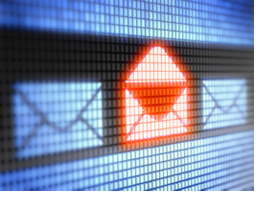Business owners frequently ask how they can maintain constant contact with their publics. Sure social media has its benefits and should definitely be done, but e-newsletters can be a powerful tactic if correctly implemented.
I’m not going to pretend that it’s easy to get started with an e-newsletter. It’s a complicated process that includes articles and content, email providers, mailing lists, analytics, templates and designs, and so on.
All that aside, I want to focus on three important tips to keep in mind when launching an e-newsletter.
Use an email marketing provider
One thing that I’ve seen several times from small business owners is that they start an email marketing program where they send messages from their own email account (like Outlook). While it may be easy to send messages, you run into several issues.
When you send messages from your own email account, you might find it difficult to manage your mailing list. At the same time, you are not providing recipients with a way to manage their subscription if they so choose.
I recommend using an email marketing service provider such as iContact. It provides users with a simple-to-use interface to manage mailing lists, email templates, and social sharing functionality. Most importantly, these service providers have analytics that help you monitor the performance of your campaigns such as open and click-through rates that provide valuable insight into the content that you include in your messages. If you don’t know how well your program is working, why are you doing it?
Don’t overwhelm readers
Like many business owners, I get tons of emails each day. It sometimes can be overwhelming, but I work at managing the amount of time I spend checking and responding to emails. The newsletters and emails I get from businesses of interest are sometimes a treat as it takes me away from typical business messages to read and learn more about “what’s out there.”
A key tip for someone who is thinking about creating an e-newsletter is to not overwhelm your reader. Break your newsletter up with small introductions into articles and link them to your website where readers can continue reading if they’re interested.
By linking to your website, you’re pulling people in who, otherwise, might not even visit your site. Additionally, you’re adding additional content to your site that might benefit you in terms of search engine optimization (SEO), if done correctly.
Bottom line, your e-newsletter should be brief and easy to scan. If readers want to read more about a certain topic, they can click on links to learn more.
Education might lead to referrals more than hard sales tactics
While email marketing should contribute to your overall sales, it should primarily be seen as a resource for your recipients. Ease off sales messages and increase education.
Take for example my e-newsletter. I try to focus primarily on educating my target audience on marketing communications topics. It’s a valuable resource that gives my readers a quick lesson on various topics. Almost every time, I get someone who in-turn connects with me wanting to learn more about a product or service because of the educational articles I’ve taken time to develop for them.
When you educate your publics, you’re establishing yourself as a knowledge leader. Eventually, when they need your services, they will immediately think of you because of the things you’ve talked about.
Now with that said, you shouldn’t forego asking for business. Just keep your hard sales requests down to maybe like 20 percent of your email content. Like the old-saying goes, “It never hurts to ask.”
There you have it; three important tips to keep in mind when you’re developing an e-newsletter for your business. If you would like to learn more about how email and other Internet marketing tactics can benefit your business, feel free to contact me. I’d sure love to help.





